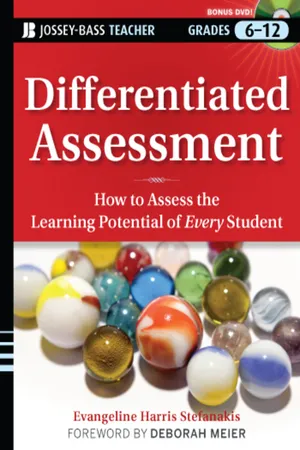Our president has to look at how we are going to bring our school system into the 21st century…. We have been operating the most unequal educational system in the industrialized world, with dramatically different resources available to different students. At this point in the knowledge economy, what kids need to be able to do is to frame and solve their own problems, find and manage information, organize themselves in teams, and—with collaboration—tackle novel issues. We need to focus our curriculum on standards that evaluate how people can think and problem solve and invent and create and use knowledge in new ways and continue to learn independently. That means we have to change the assessments that we use. Most countries in the world that are high achieving have assessments that ask students to think and problem solve and investigate and conduct research. We are still having our kids bubble-in multiple-choice tests, which focus on recall and recognition rather than on these higher order thinking skills.
Are the 21st-century learning environments that educational leaders call schools designed to reveal and teach to the abilities of the learners they serve? Several critical questions, as Linda Darling-Hammond suggests, plague U.S. educators as they strive to develop programs and policies that reach and teach every child:
New York Times Op-Ed: Failing Our Students!
By Evangeline Harris Stefanakis, Op-Ed Contributor
January 8, 2006
Beginning this week, New York City's fourth graders will take the state's standardized tests in reading and writing. Many people are looking forward to a repeat of last year, when the city celebrated a nearly 10 percent increase in fourth-grade reading scores. But not everyone is sharing in the anticipation.
Luis Castro, a 12-year-old from the Dominican Republic, is worried that he will not pass the test and thus be forced to repeat the fourth grade, again. Like so many over-age immigrant students at the school he attends on the Lower East Side, Luis is as tall as most seventh graders, has an incipient mustache, and is tired of being teased. Worse, he's afraid of disappointing his parents, who, like so many other immigrants, have pinned their hopes on their children.
New York City schools base their decision on whether to promote students entirely on results from the state achievement exams. But these tests, which are written for native English speakers, discriminate against those who are still learning the language.
Luis is a perfect case in point. His schoolwork shows that he has made significant progress since September and that he has met state standards in the work he has completed. But when Luis takes state tests, he is unable to quickly comprehend what he reads in English, and that hurts his performance . . . and his score.
Today, this is the judgment that counts, but the impact of this policy is hurting large numbers of intelligent children.
Even by conservative estimates, immigrant children like Luis account for close to half the student population in public schools across New York State. The same is true in many urban environments across the U.S. and internationally.
Doing well isn't simply a matter of knowing English. Standardized tests measure children's knowledge of “cognitive academic language,” or the language of a highly literate population. Students in middle-class areas like the Upper East Side, the Upper West Side, Park Slope, and Riverdale are well versed in this language.
But students in Washington Heights, Corona, East Brooklyn, and other low-income, immigrant communities do not read, write, or speak [English] fluently. In most cases, neither their parents nor other adults they come in contact with speak this language to them, and yet, they are required to learn it to pass state tests and be promoted. Their test scores reflect the fact that they often must literally translate as they work, either from their native language to English, or from the version of English they speak in their minority community to cognitive academic English.
What is needed is “differentiated assessment” that looks at the learner's abilities in the context of a collection of evidence that provides information on what that child knows and is able to do. What does this mean in practice in the daily learning environment?
The solution to this problem, already used by many schools and districts in other parts of the country, is to use a student's body of work, or portfolio, as an additional means of assessment. Where standardized tests alone reveal only the language differences of students, a growing body of research shows that a combination of formal tests and informal assessments can indicate their progress. Portfolios, in particular, capture both the process and products of students' learning and reflect their multiple languages, multiple intelligences, and multiple abilities.
Perhaps even more important, an approach that includes portfolios would not only improve assessments of immigrant students, but would also help ensure that they receive a good education. Portfolios reveal what is being taught and help to ensure that teachers regularly observe and document the learning of each student.
Skeptics may ask, couldn't schools, under pressure to show progress, simply rubber-stamp portfolios regardless of quality? No, because, just as with statewide tests, there are clear, codified standards for judging portfolios. In math, for example, young children must demonstrate counting, numeration, and data-analysis skills.
But couldn't teachers or parents polish up a child's portfolio to make it look more impressive than it really is? That's probably true, just as it's true for any homework assignment, but the student would still be required to take standardized tests, which would reveal any discrepancies.
Differentiated assessment practices are growing nationally in the U.S.
Georgia, Hawaii, Tennessee, and Virginia have been among the leaders in adopting standards-based testing programs using portfolios and alternative assessments for bilingual students and those with limited English proficiency. Even though the state achievement tests are scheduled for this week, it's not too late for New York City schools to follow the lead of these states. In making their promotion decisions, indivi...
